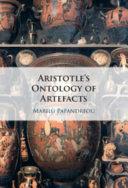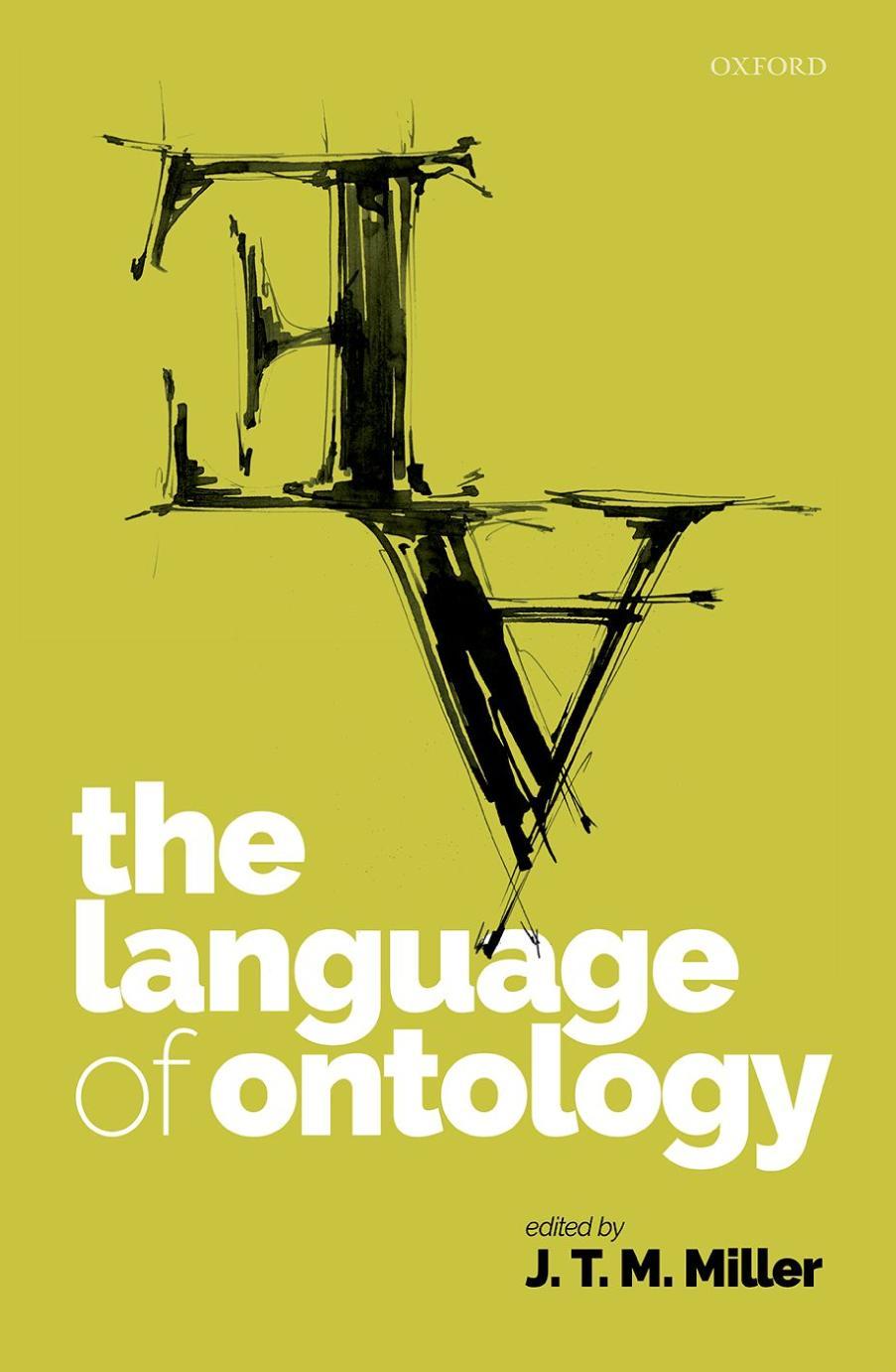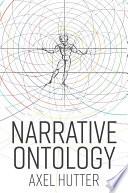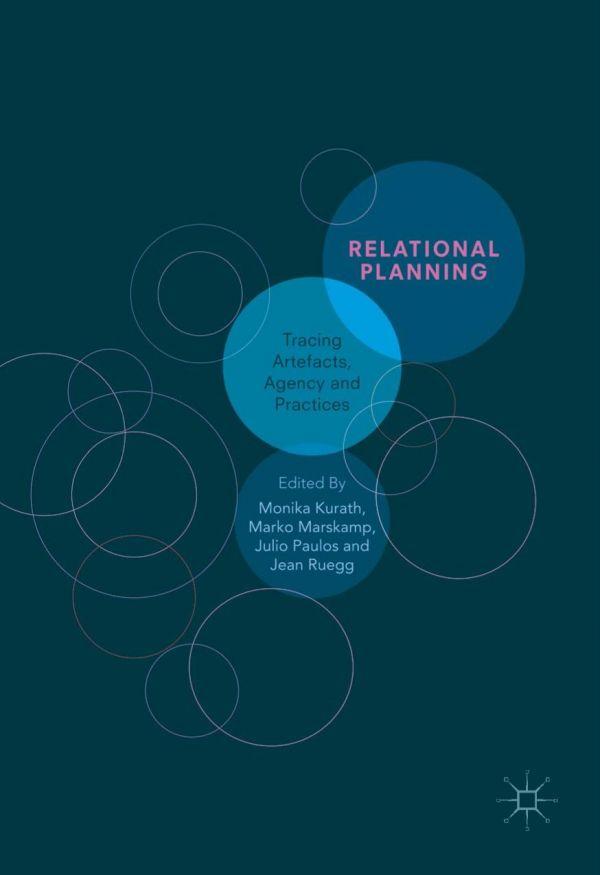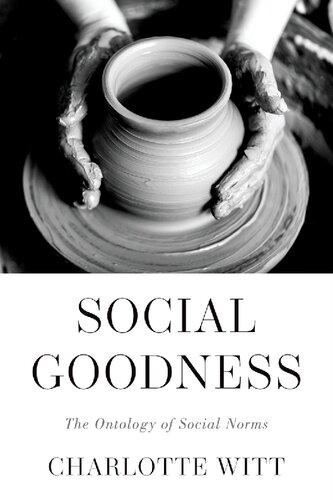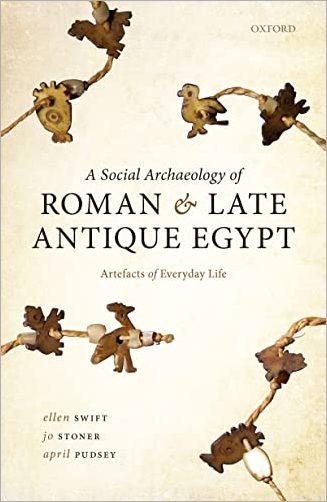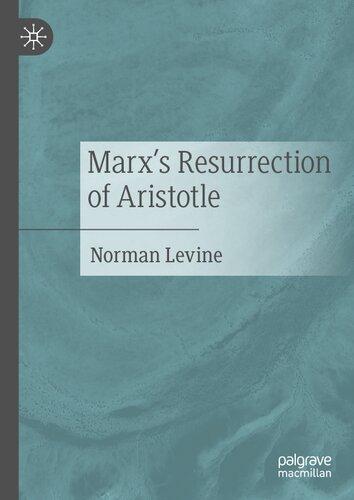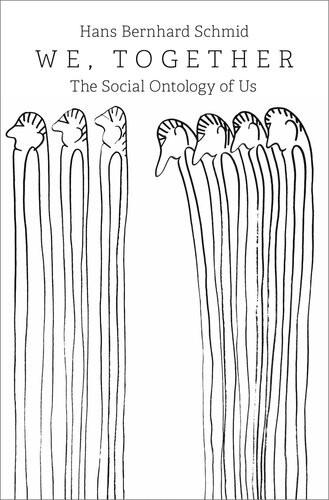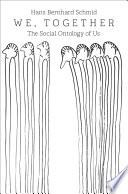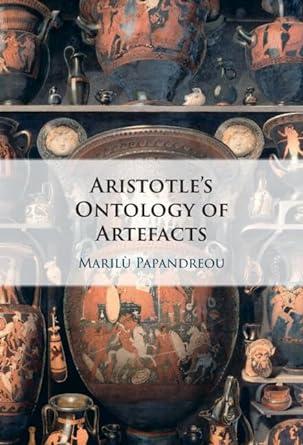Acknowledgements
ThisbookbeganasadoctoraldissertationattheMunichSchoolofAncient Philosophy(LudwigMaximilianUniversityofMunich).Myprimarydebt istomysupervisorandmentorChristofRappforhisprofoundand manifoldinfluenceonmeasascholar.Iamindebtedtomysecondreader, PeterAdamson,forhisformativefeedback,kindness,supportandalways promptadvice.IcouldnotwishforabetterplacethanMUSAΦ to conduct,andlearnhowtoconduct,researchinancientphilosophy. ChristianPfeifferandLauraCastellihavebeenparticularlygenerousand commentedonvariouschaptersduringmyPhD.Ialsoowethemagreat dealofgratitudeforinspiring,withtheirrespectivework,manyofthe decisionsImadeinreconstructingAristotle’sontologyofartefacts.Iwish tothankOliverPrimavesiforunerringlysharinghismostrecentworkon thetextofAristotle’ s Metaphysics,thussecuringarobustfoundationand philologicalsoundnessformyproject.ColleaguesandfriendsatMUSAΦ havebeenanoutstandingsourceofhelptoo,inparticularAndreas Anagnostopoulos,JonathanGreigandMelinaVogiatzi.
TheUniversityofMilaniswhereI firstbecamepassionateaboutancient philosophyandstartedramblingoverlunchaboutwhetherthereareIdeas ofartefacts.ItrulycannotthankenoughFilippoForcignanò,Mauro BonazziandFrancoTrabattoniforinstillinginmesuchadeepaffection forthetopic.Backthen,IalsohadthefortunetohavemyPhDprojectidea discussedwithMaddalenaBonelliandSimoneSeminara,towhom Iwouldliketoshowappreciationaswell.
DuringandafterhavingcompletedmyPhD,Ihavefortunatelybeen allowedtopresentpartofmyresearchonseveraloccasions.Iwouldliketo offerthankstotheaudiencesinBerlin,Berkeley,Cambridge,Falconara, Milan,PaviaandParis.Iwishtoexpressmygratitudetothosewhotook extratimeandshowedinterestinmyresearch,bychallengingitinan incrediblyobligingandalwayssympatheticmanner:Riccardo Chiaradonna,NicholasDenyer,AndreaFalcon,AndreasLammer,Gyula
KlimaandDavidSedley.OnewhorevealedtomeconnectionsIwasnot awareofwasThomasKjellerJohansen,towhomIamexceedinglygrateful fortakingthetimetomeetwithmeinOslo.Furthermore,Iwouldliketo extendthankstoStephenMennforallowingmetocitehisworkinprogress.
Myunderstandingofthecontemporarymetaphysicsofartefactsowesan immensedebttoKathrinKoslicki.Iwishtothankherforsharingand discussingwithmeherchapteronartefactsinMunichin 2017 andfor continuingthisconversationinBerlinin 2022.Totellthetruth,Iwould nothavebeenabletoplaceAristotleintodialoguewithcontemporary metaphysicianswithoutherwork.
Thebookinits finalformowesthemostgratitudetotheanonymous referees,whoprovidedawealthofastoundingadvice.Icannotexpresshow gratefulIamforhowthoroughlytheyengagedwithmybookandhow attentiveandacutetheircommentswere.Itisimpossibletoexhaustively namethewaystheirfeedbackimprovedmybook,butIwouldliketo especiallyhighlighttwomajordebtsIcollectedtowardsthem.Iwasguilty ofunderestimatingtheimportanceofthePlatonicheritageandtheroleof Aristotle’ s Physics.Iowetothereviewerstheverystructureofthebookas revolvingaroundAristotle’sresponsetoPlato,aswellastherehabilitation ofthe Physics andtheemphasisonitssignificanceevenconcerning Aristotle’sontologyofartefacts.
Individualchapterswereconsiderablyimprovedthankstohavingbeen giventheopportunitytopresenttheirdrafts.IwishtothankPierre-Marie MorelandUlysseChaintreuilforinvitingmetoParistopresent Chapter 8. Moreover,IthankChiaraBlengini,FedericoCasellaandBeatriceMichetti forinvitingmetoPaviatosharemythoughtsontheverypeculiarcaseof mixtures(Chapter 3.4.2).
IcannotfailtoacknowledgetheUniversityofBergen,whereIam currentlyapost-doctoralresearcher.Withoutadoubt,theyhaveoffered methebestconditionsimaginabletobringthebooktopublication.Iwish tothankSteinarBøyuminparticular,whosesupportiveleadershipimmediatelymademefeelintherightplace.Furthermore,Iwouldliketo expressmygratitudetoHallvardFossheimandKristianLarsenfortheir insightfulfeedbackonthe firstchapter.
Ifthisbookisatallreadable,itisthankstoChadJorgensonandhis unmatchedcompetenceasEnglishlanguageeditor.Henotonlymademy Englishclearerandmoreidiomatic,butalsoactedasanencouraging teammatealongtheway.Moreover,ifthisbookisatallabook,itisthanks totheeditorMichaelSharp,withhisbrilliantguidanceandgreatsupport alongtheway.
Onamorepersonalnote,thisbookhasbeenwrittenandrevisedin numerouslocations,allofwhichhavefeltlikehometome.Thisfeeling playsnonegligiblepartinthewritingprocess.Icannotbutwholeheartedly thankmyparents – towhomIdedicatethisbook – andmyfamilyinItaly, inparticularAliceandIvan,aswellasmyfriendBenny.Mostoftheeffort thatwentintothisbook,however,wasinMunich,whereIwassurrounded bygreatfriends.Theirpresence,encouragementandinteresthasbenefitted meandthisbookinwaysthatarenearlyimpossibletoexplain.Mysincere thanksgotoBiene,Blake,Brett,Connie,Elena,Felix,Minnaand Tommaso.AspecialthankyoualsogoestotheCenterforAdvanced Studies(LudwigMaximilianUniversityofMunich),andtoAnnette Meyerinparticular.Nobodytaughtmetolookoutsideofmyownbubble andallowedmetounderstandmyrole,howeversmall,inthewider academicandresearchworldthanAnnettedid.IwasfurthermoreincrediblyfortunatetooftenbeabletorevisemybookinNorway,particularlyin BøinTelemarkandontheislandJomfruland.IwishtothankTuridand HalvorfortakingcareofmeandmakingsureIcouldworkundisturbedin suchwonderfulplaces.Itturnsoutthatnothinghelpsmemoreasawriter thanNorwegian kos.Finally,IwouldliketothankJosteinGåra,forsharing thisjourneywithmesinceitsbeginningandforinfalliblybeingmy compassanddearesthumanbeing.Icannoteverhopetorepayhim.
Abbreviations
An.Post. PosteriorAnalytics
Cael. OntheHeavens
Cat. Categories
DA OntheSoul(Deanima)
EE EudemianEthics
GA GenerationofAnimals
GC GenerationandCorruption
HA HistoryofAnimals
MA MovementsofAnimals
Mech. Mechanics
Met. Metaphysics
Meteor. Meteorology
MM MagnaMoralia
NE NicomacheanEthics
PA PartsofAnimals
Parm. Parmenides
Phaed. Phaedrus
Phys. Physics
Pol. Politics
Rep. Republic
Symp. Symposium
Theaet. Theaetetus
Top. Topics
AllreferencestoAristotle’stextfollowBekkerpagination.
AllreferencestoPlato’stextfollowStephanuspagination.
Alltranslationsaremyown,unlessotherwisespecified.
Introduction
Thisbookconcernstheontologicalstatusofproductsofart(technê)in Aristotle,inparticularmaterialobjects.Itmakesthreemainadvanceswith respecttotheexistingliterature:the firstwillbeofinteresttocontemporary metaphysicians,thesecondtohistoriansofphilosophy,andthethirdto bothcontemporarymetaphysiciansandhistoriansofphilosophy.First,the metaphysicsofartefactsisincreasinglygainingtheattentionofcontemporarymetaphysicians,inparticularamongsupportersofhylomorphism, whoallrefertoordrawonAristotle.However,thereisnoconsensusabout theplaceofartefactswithinAristotle’sontology;indeed,thereisno consensusastowhetherAristotlearticulatesasinglecoherentaccountof artefactsinthe firstplace.Hence,the firstcontributionmadebythisbook istoofferacompletepictureofAristotle’saccountofartefactsthatis sensitivetocurrentissuesandthatcanthereforeserveasaguideforthe contemporary(neo-)Aristoteliandebate.Second,whenitcomesto technê, historiansofphilosophyhaveprimarilyfocusedontheartanalogyand Aristotle’suseofexamplestakenfromtheartificialrealm.Theyhaveoften concludedthatAristotle’sappealtoartefactsdoesnotleaveuswithany positiveresultaboutthestatusoftechnicalobjects.Todate,littleefforthas beeninvestedindemarcatingAristotle’snotionofartefactsinawaythat goesbeyondtheartanalogyandahandfulofcommonlyusedexamples. Thebook’ssecondcontributionistoshowthatAristotlegivesaspecific, coherentaccountofartefactsandthathedidnotmerelyemploythemas examplesoranalogicalcases.Itsthirdand finalcontributionistoaddress anissueofkeyinteresttobothAristotlescholarsandcontemporary metaphysiciansconcerningtheontologicalstatusofartefacts,namelythe questionofwhethertheyaresubstancesand,ifnot,whytheyfailtoattain thisstatus.Noconsensushasyetbeenreachedregardingthesubstantiality ofartefacts:thereisagreementneitherastowhetherartefactsaresubstances,atleasttosomeextent,norastotheultimatereasonwhytheyare ontologicallyinferiortolivingbeings.Thisbookproposesanewsolution
tothisproblem.Ishallnowbeginbyofferingsomepreliminary,foundationalremarksonthetopicandthemethod.
0.1 ArtefactsintheContemporaryDebate
Thevastmajorityofoursensoryexperienceis filledwithhumandependentobjects. ‘Otherthantheskyandsometrees,everythingIcan seefromwhereInowsitisartificial’,asHenry Petroski(1992) putsitatthe beginningofhis TheEvolutionofUsefulThings.Petroski’sbookaimsto examinethewayinwhichsuchobjectshavecometolookthewaytheydo, byadoptingahistoricalperspective.Thisperspectiveisnon-philosophical insofarasitpresentsasortofcommon-senseviewofartefactsas,ingeneral, objectsthataredesigned – thatis,objectsfromourdailylivesemployedin specificculturalsettingsthatcame-to-beasaresultofoccasionallyrather complicateddesign-histories.Artefactsarethereforeobjectsthathuman beingshavedesigned,suchasforks,paperclips,hammers,nailsandspikes. Asimilar,yetnonethelessdifferentapproachisrepresentedbythearchaeologicalconceptionofanartefact:somethingmadeorgivenshapeby humans,usuallyfoundburiedalongwithabody,amongvotiveofferings, inhoards,orinadomesticsettingormidden.Examplesincludestone tools,potteryvessels,metalobjectssuchasweapons,anditemsofpersonal adornment,suchasbuttons,jewelleryandclothing.Bycontrast,neither non-portableremains,suchashearths,norbiofactsandmanuportsare consideredartefactsbyarchaeologists.1
Withinanon-philosophicalperspective,we findthefrequentcommonsenseidentificationofartefactswithartworks,suchaspaintings,drawings andothercreativeproducts.Althoughworksofartcan,inmanyrespects,be conceptualisedasartefacts,theymakeuponlyasmallportionofthisgroup. Asimplesemanticshiftwouldsufficetoinvalidatethisidentification: commonsensedoesnotwhollyidentifycrafteditemswithworksofart. Indeed,theveryword ‘artefact’,inoppositionto ‘craftwork’,allowsfor amisrepresentationoftheclassofobjectsasbeingartisticproductsinthe ordinarymeaningoftheterm.Thisispartofthereasonwhyseveral contemporarythinkersprefertotalkabout technicalartefacts inorderto disambiguateandexplicitlyexcludeartworksfromtheirsurveys.2 The adjective ‘artificial’ exhibitssimilarambiguity.Theordinaryunderstanding
1 Biofactsareobjectsthataremerelyhandledbyhumansbutnotmadebythem.Usuallybiofactsrefer totheresidualmaterialofaformerlylivingbeing.Manuportsarenaturalobjectsthathumanshave moved,butnotchanged.
2 See Baker(2007)
ofthistermtakesittomeaneither ‘madeaccordingtoart’/‘man-made’ or ‘notsincere’.Thus,thereplacementof ‘artificial’ byeither ‘crafted’ or ‘technical’ helpstoavoidambiguity.Inthisbook,Ishallemploytheword ‘artefact’– and,consequently, ‘artificial’– torefertoaclassofhumandependentobjectsthataretypicallybroughtintoexistencethroughaspecific setofskills(i.e.artorcraft).
Ifwedefineartefactsasbothartisticandtechnicalitemsthatarebrought intoexistencebyhumanagents,whyaretheyinteresting?Fromanordinary pointofview – withoutyetenteringintophilosophicaldiscussion – artefacts areinterestingbecausenobodycandowithoutthem.Ofcourse,onecould verywelltakethedecisiontopushtechnologyoutofone’slife,buttechnical itemsarefarmorenumerousthantechnologicalitems,suchassmartphones, computersandconsoles.Theworldweliveinis filledwithroads,bedsand tools.Anyoneinterestedintheworldwouldhavetoacknowledgethevast quantitiesofartefactspresentinit.Evenwhennotacknowledged,artefacts playamajorroleinshapingsocietiesandpeople’slives.3
Theomnipresenceofartefactshasbeenwidelyunderestimatedby philosophersandinterestintechnologyisarecentdevelopment.Two branchesofphilosophyhaveshownthemostinterestinartefacts:philosophyoftechnologyandaesthetics.Theformeremergedasadisciplineover thelasttwocenturiesandwasprimarilyassociatedwithquestionsof philosophyofscienceandengineering.4 Thelatterwasspecificallyengaged withquestionsregardingworksofart,leavingasidetoolsandotherobjects ofthissortthatconstitutethemajorityofartefacts.
Themetaphysicsofartefactshasreceivedcomparativelylimitedinterest.5 Thisisprobablyduetoatraditionthatdowngradesmanifestthings6 and deniesthevalueofartefacts.Onecontemporarycontroversyhas,infact, focusedonwhetherartefactsdeserveaplaceinourontologyatall.Theidea thatartefactsmightdeservetheirownontologicalpositionhasoftenbeen rejected.PuzzlessuchasthatofTheseus’ Ship7 ortheproblemofcoinciding
3 Foradiscussiononthewaysinwhichwellandbadlydesignedartefactsaffectourlives,see,for instance, Norman 2001;andforaconsiderationofartefactsas ‘collaborativeactions’ ,see Preston 2012.
4 Itisstilldifficulttounderstandwhatthedisciplineofphilosophyoftechnologyconsistsofand whetheritisaself-containeddisciplineinthe firstplace.Foranoverview,see Franssen 2009; Reydon 2012
5 Ishallsetasidethetreatmentofartefactsinsemantic,mereologyandformalontology.
6 Inthemoderndiscussion,theclassof ‘manifestthings’ includesmacroscopicbeingssuchasartefacts andlivingbeings.
7 ThepuzzleofTheseus’ Shiphasacquiredspecialnotoriety.ItispresentedbyHobbesinhis De Corpore (1655)andreconsideredby Simons(1987) and Wiggins(2001)
objects8 seemtothreatentheiridentityandexistence.Theso-called ‘Denial Thesis’ proposedby VanInwagen(1990) hasbeenhighlyinfluential,accordingtowhichnotonlyartefacts,butalsoinanimatematerialobjectsdonot exist.9 Thisscepticismabouttakingartefactsseriouslymayalsoreflectamore generalscepticismtowardsordinarythings(naturalaswellasartificialbeings presentinourdailyexperience – suchasdogsandchairs)ofthesortthatwe find,forinstance,in Unger’s(1979) article.As Baker(2007, 4–5)states:
Somecontemporarymetaphysiciansrejectordinarythings10 becausetheytake irreduciblerealitytobeexhaustedbyacompletedphysics;somerejectordinary thingsbecausetheytakecommonsenseobjectstobetoosloppy – theygainand loseparts;theyhaveno fixedboundaries – tobeirreduciblyreal.Manyof today’sphilosopherstakeconcreterealitytobenothingbutfundamental particlesandtheirfusions,orinstantaneoustemporalparts,and/orafew universals,andseenoontologicalsignificanceinordinarythingsliketrees andtables.
Bakeristhereforepartoftheminortrendoftakingordinarythingstobe irreduciblyrealand,hence,asdeservingaspotinourontologies.
However,growinginterestinartificialobjectshasalsobeenwitnessed recentlyinmetaphysics,wherethemainquestionsareaboutthekindof entitiestheyareandwhethertheyexistatall – sincetheiridentityconditionsseemunclearwithrespecttobothparticularobjectsandartificial kinds.Metaphysicshasmostlyfocusedonworksofartsalone,andespeciallyonthequestionoftheontologicalcategorytowhichtheybelong. Manyphilosophershave,infact,definedworksofartasevents,processes oractions.11 Themetaphysicsoftechnicalartefacts,orartefactsingeneral (includingbothtechnicalartefactsandartworks),hascertainlyreceived alimitedattentionduetowidespreadscepticismabouttheirmetaphysical value.However,twoleadingapproachestodefendingartefactsasserious objectsofphilosophicalthinkinghavebeenpromotedinrecentyears.The firstistorejecttheargumentsagainsttheontologicalvalueofartefacts. Thinkersfollowingthis firstpathinclude Rea(1995, 1998)and Soavi (2009).12 Thesecondwayofsecuringaplaceforartefactswithinour
8 SeeRea 1997.
9 Byproposingatheoryofcomposition,VanInwagenclaimsthatonlylivingbeingsandtheirsimples exist.
10 Theclassofordinarythingsisbroaderthantheclassofartefacts.Ordinarythingsalsoincludeliving beings.Somephilosophersdonotmerelyexcludeartefactsfromontology,buttheydosoby excludingordinarythingsasawholefromtheirdiscussion.
11 Foranoverviewofthepositionsconcerningtheontologicalstatusofartworks,see Livingston 2011
12 Soavi(2009),forinstance,examinesandrejectsthreeargumentsagainsttherealityofartefacts: Wiggins’ argumentthatartefactkindsarenotsortals(Wiggins 2001),VanInwagen’scomposition
ontologyistodefendthevalueofasuper-categorythatincludesartefacts, aswellasotherthings.13 Often,thislatterapproachispursuedalongsidethe rejectionofargumentslevelledagainstthesuper-categoryinquestion.For instance, Elder(2007) includessome – thoughnotall – artefactsinthe classof copiedkinds andarguesthatthey ‘havegenuine,mind-independent existence – existencecausedbyus,tobesure,butnotconstitutedbyour believingwhatwedoaboutwhereartifactsaretobefound’ . Thomasson (2007a) includesartefactsinthesuper-categoryof ordinaryobjects and arguesinfavourofarealistposition,byopposingtheideathatdependence onhumanbeliefsandintentionscannotcoexistwiththerealityofartificial andinstitutionalobjects.Bakerfocusesonthesuper-categoryof familiar things anddefendstheirvalue:sheexplainsthattheeverydayworldisthe locusofhumaninterestandconcern(Baker 2007, 7)andthatit figuresin thecausalexplanationsthatwemake.Alsoinfavouroftherealityof artefactsisKoslicki,14 whodeclaresherwillingnesstoincludeartefactsin herdiscussion,despitebeingscepticalastowhethertheycanbecountedas hylomorphiccompounds.Whilestillconstitutingaminority,supporters oftakingartefactsseriouslyinmetaphysicaldiscussionshavebeengrowing innumberandstrengthinrecentyears.Itseemsthatthecomplaintmade by HoukesandVermaas(2009) aboutanalyticphilosophersofartefacts wasnotunheard: ‘Onlythosephilosopherswhoaimataverycomplete and/oraverygeneralunderstandingoftheworldcare,atsomepointin theirprojects,toexamineartefacts.’ Aprominent,butunwelcomefeature ofanalyticstudiesofartefactsistheirlackofspecificity:theytouchupon artefactsmerelybecausetheyaredealingwithalargerrangeofbeings,ifnot allbeings.Ontheonehand,numerousworkshaveassociatedartefactswith arangeofotherbeings,soastocreateamoregeneralclassofbeingssharing aparticularmetaphysicalfeature:examplesofthisincludecopiedkinds (Elder 2007)andordinaryobjects(VanInwagen 1990).Ontheotherhand, someworkshavefocusedonspecifickindsofartefacts,suchasartworks,or havediscussedartefactswithoutdrawingadistinctionbetweenartefacts andotherhuman-dependentthings,resultinginthewiderclassofIDobjects.Analyticmetaphysiciansofartefactshavemostlyaddressedthemin argument(VanInwagen 1990, 90, 98)andMerricks’ argumentfromcausaloverdetermination (Merricks 2001, 56–8).Sheargues(29–30)thatthethreeaccountssufferfromthesamefundamental flaw:noneofthemestablishesaclear-cutdistinctionbetweenartefactsandnaturalbeings.More recently, Koslicki(2018),whileaddressingauthor-basedaccounts,pointsouttheirdifficultiesin dealingwithobjectsthatareclearlyclassifiableneitherasnaturalbeingsnorasartefacts.
13 Worksdefendingthemetaphysicalseriousnessofartefactsinclude Rea 1995, 1998; Thomasson 1999, 2007; Elder 2004, 2007
14 Koslicki 2008, 2018
what HoukesandVermaas(2009) callthe ‘detachedway’,onthegrounds that ‘artefactsarecomparedwithobjectsthatareindependentfromhuman interestsoritisexaminedwhetherartefactsaresufficientlyindependentto qualifyasobjectsorasmembersofanaturalkind’.Onlymorerecent developmentshavegivenrisetoan ‘involvedperspective’,inwhichour involvementwithobjectsistakenasrelevanttotheirrealnature. PhilosopherssuchasBaker,ThomassonandElderplaceintentionalong withactionssuchasdesign,productionandmodificationatthecentreof theirenquiry.
However,evenamongthinkerswhoarewillingtoincludeartefactsin theirenquiriestherearecontroversies,inparticularaboutthedefinitionof theclassofartefactsandtheessenceofagivenartefact.Asregardsthe first controversy,aninitialdefinitionofwhatanartefactissupposedtobeis providedby Hilpinen(1993),whoidentifiesanartefactwithanobjectthat hasanauthor.Inthesameyear, Dipert(1993) describedanartefactas somethingintendedbyitsauthortoberecognisedashavingbeenintentionallymadeforacertainpurpose.However,bothfocustheirattentionon artefactsthatareworksofart.Bycontrast,adefinitionofartefacts,inthe senseoftechnicalartefacts,isadvancedby Thomasson(2003, 2007),who definesartefactsasintendedproductsofhumanactivity.Thediscussion concerningthedefinitionoftheclassofartefacts(i.e.ofwhatthingsare artefacts)hasoccasionallyoverlappedwiththedebateabouthowtopinpointtheessenceofagivenartefact.Thisoverlapisprimarilyduetothe predominantidentificationofartefactualessenceswiththeauthor’sintentionsoracts:thedefinitionofanartefactassomethingproducedforagiven purposecoincideswiththeartefact’ sessenceas ‘beingproducedforthe purpose K’.Itistoooftenthecasethattheextensionalquestionconcerning preciselywhatthingsaretobecountedasartefactsisconfusedwiththe questionoftheessenceofagivenartefact;thatis,ofhowartefactual essencesoughttobeconceived.Atanyrate,artefactualessenceshave beensingledoutinseveraldifferentways.Mostessentialistaccounts identifytheseessenceswiththemaker’sintentions.15 Ashasalreadybeen mentioned,Thomassonclaimsthattheauthor’sintentionsareconstitutive ofartefactualessences,henceartefactsareessentiallymind-dependent humanproducts. Baker(2007) describestheessencesoftechnicalartefacts as properfunctions,namelythepracticalgoalthattheobjectissupposedto achieve. Elder(2004, 2007)speaksaboutfunctionsaswell,buthedoesso fromahistoricalperspectiveinwhichtheyarecopiedfromearlierproducts
15 Ileaveasideconventionalistaccounts.Foranoverview,see Koslicki 2018, 237–9
ofthesamekind.Inhisview,anartefact’sessenceincludestheproduction ofcertaineffects.Morerecently, Evnine(2016) hasidentifiedartefactual essenceswithactsofcreations:anactofcreationinvolvestheagent performingtheaction,aswellastheeventsunderlyingtheaction,such asbodilymovementsandotheractions.Anotherangleisprovidedby Kornblith(2007),whosuggeststhatagivenartefact’sessencemightbe redefinedbysubsequentuserintentions,asopposedtotheoriginalmaker’ s intentions.
Inadditiontothetwomajordisputesaboutartefacts,inthecurrent metaphysicaldiscussion,hylomorphicaccountsareopentoseveralother challenges,whicharehighlightedby Koslicki(2018).Onechallengeiswhat Koslickicallsthe ‘easyontology’ challenge,consistingofthefollowing problem:iftheintentionsofthemakeraresufficienttobringaboutanew object,itappears ‘ tooeasy ’ tocreatenotonlynewitemsbutalsonew kinds. Accordingtothischallenge,notonlybiofacts,ready-madesandfoundobjects,butalsoapotentiallyendlessnumberofprototypesmightcometo populateourworld.Anotherchallengeiscalledthe ‘ scope ’ challengeand concernstheontologicalstatusofthingsthatareneithernaturalnorqualify asartefacts;forexample,animalartefacts,by-products,residuesandunintendedproductsofhumanactivity.Thelackofacleardefinitionofthe classofartefactsisarealproblemwithinthecontemporarydebateand ultimatelyinfluencestheontologicalquestionregardingsuchentitiesas well.16 Aristotleprovidesuswithconceptualtoolstodealwithsuch challenges.17 Moreover,Aristotleprovidesadefinitionoftheclassof artefactsthatmarksthemofffromboththeclassofordinaryobjectsand theclassofhuman-dependentobjects.
Baker(2007, 5)declaresthatAristotlewasquitetheexceptioninthe historyofphilosophy,inthathewaswillingtoaccommodateartefacts withinhisontology.Aristotlewasarguablythe firstphilosophertomake suchlarge-scaleuseofartefactsand,moreimportant,toincludethemin specificallymetaphysicaldiscussions.Moreover,hedidsoinan ‘involved way ’.Today,severalmetaphysicianseithercallthemselvesAristotelian,or aresupportersofhylomorphism,oragaintheydrawonAristotleforsome oftheirclaims.InordertosidewithAristotle,however,onerequiresaclear overviewofAristotle’saccountofartefactsandthemainpropositionsit advances.
16 See Soavi 2009, 29–30
17 ForadiscussiononhowAristotlewouldfacethechallengeshighlightedby Koslicki(2018),see Papandreou 2018
Thetopicofartefactsiscurrentlydebatedbycontemporaryphilosophers tothesameextentthatitwastraditionallyunderstudiedbyhistoriansof philosophy.Despiteexcellentworkonthenotionof technê,whichhasbeen chieflysurveyeduptotheHellenisticage,18 comparativelylittleattention hasbeendedicatedtoartefacts.Consideringthatthecurrentdebateon artefacts flourishedwithinanAristotelianframework,itisallthemore strikingthatmostworkdonebyhistoriansofancientphilosophyon artefactsconcernsancientPlatonism.19 Inparticular,thedebatewithin theAcademyaboutwhetherthereexistIdeasofartefactshasreceived deservedattention.20 Moreover,thesamecontroversyhasbeenstudied inLateAntiquity,especiallywithreferencetoProclusandSyrianus.21 However,AristotleandthehistoryofAristotelianismhas,surprisingly, notreceivedthesameattention.Theonlybook-lengthdiscussionof artefactsinAristotleis Katayama’s(1999).Theothercontributionsby Aristotlescholarsonlytouchuponartefacts,ratherthanfocusingon them.Moreover,likemostcontemporarymetaphysicians,Aristotle scholarsprimarilyaddressartefactsbyincludingtheminasuper-category worthierofexplanation.Forinstance,whilefor Cohen(1996) thesupercategoryofinterestisthatof ‘incompletesubstances’,for Kosman(1987) it is ‘animalsandotherbeings’ .
BeforedivingintoAristotle’sconceptionofart,theresultinginventory ofAristotelianartefactsandtheissueoftheirontologicalstatus,itis importanttomentioncertaindifficultiesconcerningthemethodandthe natureofsuchaninvestigation.Forinstance,thereadermightrejectthe projectattheoutset,becauseitsupposedlylacksasubject-matter.Above all,whileAristotlehasaspecifictermforreferringtoartorcraft(technê),he lacksasingletermtosignify ‘artefact’ . 22 Thissemanticdeficiencygivesrise togeneralissues,themainonebeingwhetherhereallydealswithartefacts atall.TheLatinword artefactum comesfromtheablativeof ars,meaning ‘byskill’,andthepastparticipleof facere,meaning ‘made’.Aristotledoes nothavesuchatermathisdisposalinAncientGreek.However,thereare
18 See,e.g. IsnardiParente(1966) and Löbl(1997, 2003, 2008).Themostrecentcontributiontothe topicis Johansen(2021),whichcoversthenotionofproductiveknowledgeinancientphilosophyup toLateAntiquity,withachapteronPlotinusandoneonProclus.
19 Iamreferringtocontributionsconcernedwithartefactsassuch.Certainly,thereisavastliterature ontheartanalogyandteleology.Iwillreturntotheseaspectsin Chapter 3 1
20 Forexample, Fine(1993) and Broadie(2007) 21 D’Hoine(2006a, 2006b).
22 ThisisnotthecaseforAristotle’scommentators.AlreadywithAlexanderofAphrodisias, taphusika (naturalbeings)areopposedto tatechnêta (artefacts).See,forinstance, Mantissa 121 17–18
certainlyclausesthatcorrespondto ‘artefact’.First, ‘beingbynature’ (phusei)isoftenopposedto ‘beingbyart’ (technêi).Asopposedto ‘being nature ’ (estinhêphusis),whichisbeingthesortofprinciplethatnatureis, ‘beingbynature’ referstothethingsthathavesuchaprinciple.Similarly, ‘beingbyart’ referstothosethingswhoseprincipleisart(technê).Inthe caseofnaturalbeings, ‘beingbynature’,inturn,coincideswith ‘having anature ’ (echeiphusin).23 Inthecaseofartefacts, ‘beingbyart’ doesnot coincidewith ‘havingart’.However, ‘beingbyart’ isascloseto ‘beingin accordancewithart’ (katatechnên),24 as ‘beingbynature’ isto ‘being accordingtonature’ (kataphusin).Thedifferenceinbothcasesisthat ‘accordingto’ appliestosubstances,aswellastoproperties,whereas ‘being by’ seemstoreferonlytosubstantialcases.Aristotlereferstoartefactsas beings katatechnên,especiallyinthe Physics andinthebiologicalworks.25 Anotherwaytorefertoartefactsisas totechnikon,inthesenseof ‘doneby rulesofart’ – andnotinthesenseof ‘skilful’– whichisaparallel constructionto tophusikon (i.e. ‘causedbynature’).26 Thingsthatexist byartareoftenqualifiedasthingsthathavebeenputtogether apotechnês. 27 Inseveralplaces,Aristotledropsthementionof technê andrefersto phusis inanegativesense:hespeaksaboutthingsthatarenotputtogetherby nature,referringtothingssuchasavessel,ahouse,acouch,acoatand aship.28 Abroaderterm,encompassingartefacts,aswellasotherproducts thatarenotnatural,is poioumena (i.e.thingsthataremade).29 Thisterm canrefertoartefacts,aswellasotherthingsresultingfromproduction,as wellastoproductivebranchesofknowledge.Aristotleexplicitlyrefersto artin NE 1014a10–16.In Phys. 2.1 poioumena referstoartefacts,suchas ahouse,aswellastomanufacturedobjects(cheirokmêta).30 By ‘manufacturedobjects’,Aristotleseemstomeanitemsanunskilledmakercould build,suchasawell.31 Thisintuitionisconfirmedby Met. A,wherethe termreferstothethingsproducedbymeremanualworkers(hoi cheirotechnai).32 Moreover,inseveralplacesin GA,Aristotlerefersto artefactsortotheworksofNaturewhencomparingittoanartisanas
23 Phys. 2.1, 192b27–193a1.
24 Aristotleappealsto katatechnên forinstancein NE 1099b22–3; Met. 1070a17 butalsoin Protrepticus fr. 12 line 8
25 GA 730b21, 734b36, 767a17 and 775a21; PA 639b15–16; Phys. 193a32, 194b7, 199a17–19, 199a33, 199b1, 200b1
26 Phys. 2 1, 193a31–3
27 Cael. 277b31, GC 335b28, Met. 1032a27–8, 1032a32, 1032b22–3, 1032b24–5, 1034a12, 1034a34, PA 640a29, 640a32, Phys. 2 1, 192b18 and Protrepticus fragment 12 line 2
28 In Met. 1043b22 and Phys. 192b13, 254b31 29 Met. 1050a31, 1064a12
30 Phys. 2 1, 192b27–32 31 Meteor 353b25–6, 381a30 32 Met. A 1, 981a30–b2
‘thingsthatarecrafted’ (dêmiourgoumena).33 Alsothingsthatcome-to-be apodianoias,suchas,forinstancein Met. Θ 7, 1049a5,demarcatetheclass ofhuman-dependentbeingswhichisbroaderthantheclassofartefacts. Onemightaddtothislistthetermfor ‘inanimate’,since,fromthe standpointofitsmeaning,itseemstodesignateaplaceforartefacts, sinceartefactsare,infact,inanimateobjects.However,Aristotlemostly usestheadjective apsuchos torefertoinanimatenaturalbeings,suchas copperandsilver,whosemaindifferencewithrespecttolivingbeingsis theirlackofsenseperception(Phys. 244b13).34 TheAristotelian scala naturae isacontinuumrangingfromthoseinanimatenaturalbeings consideredaslifeless(apsucha)toanimals35 (i.e.thosebeingsmostfully endowedwithlife),bywayofplants,whichrepresentthebridgebetween thenon-livingandtheliving(HA 588b6–10, PA 681a13 andTheophrastus OnPlants 1.1, 816a35).Leavingasidetheadjective apsuchos,Aristotlehas severalalternativewaysofreferringtoartefactsandtheonethisbookis mostinterestedinis ‘being technêi’,whichdefinessubstance-likecasesof thingsmadebyart.Commonsenseregardssubstance-likecases(i.e. materialobjects)36 asparadigmsandthisbook,too,focusesonsuchcases (i.e.thosecasesthatwouldcountassubstancesinthe Categories).While materialobjectsarecertainlynottheonlyproductsofsomeart,sinceithas beenshownthatbeingaccordingtoartisabroaderconcept,thenotionof interesthereisthatofmaterialobjectsassubstance-likecases.
Forthisreason,the Categories willbebrieflydiscussedhere,sinceartis trans-categorical.The firstfeatureofsubstancesisanegativeone:theyare notinasubject,buttheyaresubjectsofpredicates.Somethingcanbe predicatedofasubstance,butaprimarysubstancecannotbethepredicatedofanything.Anartefactthatfallsunderthecategoryofsubstanceis thusthesubjectofpredicationandnotapredicate.This firstcrucialfeature ofsubstanceseliminatesfromconsiderationallpropertiesthatarebrought aboutbyart.Ifadoctormakesthepatienthealthy(i.e.bringsabout aqualitativechangeinthem),thenthepatient’shealthisnotthekindof artefactwewillbedealingwithhere.Thesecondfeatureofsubstancesis thateachisa todeti (i.e. this particularthing).Thisfeatureappliesto primarysubstances,sincetheyareindividualthingsthatarenumerically one.Secondarysubstancesarerathersaidtobe poiontina:manissaidof
33 GA 724a34, 743b23, 762a16, 767a19.Seealso NE 1094b14
34 Mostlybutnotalways,since,forinstance,in Met. Δ 12 onthemeaningsofcapacity(dunamis), Aristotleusesittorefertotools.
35 Betweenanimateandinanimatethereisnointermediatestate.See OnPlants 1 1, 816a5–10
36 Onproductsofartthatdonotqualifyasmaterialobjects,see Chapter 3 (Section 3 3).
manymen;thus,itdoesnotrefertooneindividualthing.Ourjourneyinto therealmofartefactswillbeguidedbyafocusonitemsthatareindividual andnumericallyone.Anotherfeatureofsubstancesisthateachsubstance admitscontraries(i.e.undergoeschanges)whilestillremainingidenticalto itselfandnumericallyone.Thisfeatureisexclusivetosubstances.Any spatiallyextendedobjectcanundergochangesfromonecontrarytothe other,whileremainingwhatitis.WhenAristotle,attheendof Cat. 5, repeatsthisnecessaryandexclusivefeatureofsubstances(i.e.thatthey admitofcontraries),hesaysthatasubstancecanremainwhatitiseven whenchangingfromdiseasetohealth,orfromwhitenesstoblackness.37 It isnoteworthythathealthismentionedhere.Thisgivesusfurtherreasonto locateitwithinanothercategoryand,morespecifically,underthecategory ofdisposition:healthcaneasilyberemovedandcanquicklychange.By contrast,habitssuchasvirtuesandvicesaremoredifficulttochange,and theyaregenerallystableandlong-lasting.Certainly,inthispassage,aswell asinothersinthe Categories,Aristotleintroduceshealthwithoutany concernaboutitsorigin:whetherhealthoccursspontaneouslyorbyart isunimportant;whatisimportantisthathealthisalwaysthehealthof somethingelse(i.e.ofasubstance).Howeverthatmaybe,thelastandmost relevantcriterionrulesprocessesoutofconsideration.Giventhethree mainaspectsofsubstance,onlysomeofthevariousthingsthatcanbe broughtaboutbyartpassthetestforsubstantialityinthe Categories.These thingsthereforerepresentthefocusofmyenquiry:spatiallyextended (concrete)individualobjectssuchastools,garments,furnitureandcraftworks.Thingsthatfailthetestofthe Categories areproperties,suchas health,events/processes,suchasboiling,andstatesofmind,suchas persuasionandagreement:thesewillallbesetaside.38 Notethatthis bookdoesnotarguefortheexclusionofhealthandpersuasionfromthe classofgenuineartefacts,butratherfortheexclusionofsuchthingsfrom thescopeofthepresentenquiry.Aswehavesaid,artistrans-categorical: healthisapropertybroughtaboutbymedicine,whilepersuasionisan affectionofasubjectproducedbytheartoftheorator.Thesethingsareall productsofartinthattheycome-to-bebyart.Thismeansthatoneshould notascribetoAristotletheviewthatartefactsaresubstance-like.Since aconsiderablepartoftheeffortofthisbookisdedicatedtosituating artefactswithinontologyandunderstandingtheextenttowhichtheyare notpropersubstances – iftheyareevensubstancesatall – thisbook, methodologicallyspeaking,excludesfromconsiderationthosethingsthat
couldpotentiallyproduceconfusion.Inotherwords,ifonefocuseson healthasthereferencecase,onemightendupexcludingallartefactsfrom therealmofsubstancesforthewrongreasons,becausehealthfailstobe asubstance, firstandforemost,becauseitisapropertyandnotbecauseitis anartefact.Thefocusisthereforeonthosethingsthat,accordingtothe Categories,wouldcountassubstancesinordertoseewhethertheycontinue tobesubstanceswithintheframeworkofthe Metaphysics.
AnotherobjectionmightderivefromtheundeniablefactthatAristotle didnotdedicateanyspecificworkorextended,well-structuredargumentationtoartefacts.39 Thismightmeanthathewasnotinterestedinartefacts and/orthathedidnot findthemsufficientlyproblematic.Certainly,there areworksdedicatedtoarts,suchasthe Rhetoric andthe Poetics,butnone thatspecificallydealswithartefactsinthewayspecified.40 Diogenes LaertiuslistsamongAristotle’sworksof ‘excellence’ twocompilationsof technai composedoftwobookseach,andaworkon Technê inonebook. Wedonotknowthecontentoftheseworks,butitseemsagainthatthe primaryfocusistheartratherthanitsproducts.41 Theclosestwegetto aworkconcernedwithartefacts – or,atleast,withtheirphysicalbehaviour – isthe Mechanics,whoseauthorshipishighlydisputed.Bycontrast, Aristotle’sinterestinanimalsisobviousfromtheenormouseffortshe dedicatedtothemandtheundeniablefactthatheestablishedbiologyas adiscipline.Whydidhenotdedicateone-tenthofthisefforttoartefacts? Oneimmediate,simpleansweristhatAristotlewasmoreinterestedin whatheregardedasaxiologicallysuperiorbeings.Hewasmoreinterested inlivingbeings,especiallyanimals,thanininanimatebeings.Itisthusno surprisethathedidnotdisplaya fierypassionforcoatsandcups.However, althoughAristotledidnotwriteatreatiseonartefacts,hewasclearly puzzledbythem.HisteacherPlatohadmadeuseofsomeaspectsof artificialproduction,butheclearlydidnothaveanyphilosophicalreason toconcentrateonthem.TheAcademydebatedtheexistenceofIdeasof artefacts,butonlyinordertobuttressthePlatonictheoryofforms.Indeed, anotherreasonwhyhedoesnotsetouthisviewsonartefactshastodowith Plato,forAristotlecanreadilyassumesomepointsmadebyPlatotothen
39 Onemightsaythattheso-called ‘chemicaltreatise’ (i.e. Meteor. 4)concernsartefactsatachemical level.However,thefocusisonchemicalprocesses,irrespectiveofwhethertheyarebroughtabout naturallyorartificially.Moreover,asIwillarguein Chapter 3 (Section 3 4 2),thehomoiomerous bodiesarenaturalbeings,eventheonesproducedbyart.
40 Forabriefdiscussionoftheproductsofartssuchasrhetoric,poeticsandpolitics,see Chapter 3 (Section 3 3 1).
41 Foraconjectureonthepossiblecontentofsuchworks,see Bolton 2021
setupanalogies.Aristotleispossiblythe firstphilosophertotakeup artefactsandtotrytosituatetheminanontology.Althoughhedidnot addressartificialobjectsatlengthorindepth,itisstillofinterestto amodernreadertoknowwhattheAristoteliananswertotheproblems posedbyartefactswouldbe.Thisbookthusaimsatdelineatingthebest theorythatAristotlecouldbecommittedtogivenhisexplicitstatements onthematter.
Aristotlehasnosingleandconsistenttermforartefacts,noextended argumentationandnoworkdedicatedspecificallytothemetaphysical statusofartefacts.Ifthiswerenotenough,heoftenmerelyusesartefacts toshedlightonmoreimportantcases.Asaresult,scholarshaveoften concludedthatAristotleemploysartefactsonlyinordertoshedlighton casesofgreaterworthandinterest,butthatthereisnotheoryofartefacts thatwecanextrapolatefromthis.However,despiteAristotle’soften pedagogicaluseofartefacts,thereis,infact,atheorylyingbehindthese examples.Inordertoseethebroaderpicture,itisimportanttooutlinethe contextsandthediscussionsinwhichartefactsshowupandtounderstand theirsignificance.WhydoesAristotlementionartefacts?Towhatextent aretheymerelytoolsforunderstandingsomethingelse?Isthereroomfor aspecificanalysisofartefacts?
Ingeneral,Aristotle’suseofartefactscanbedividedintotwogroups: positiveandnegative.Bypositiveuse,Imeanthosecasesinwhichartefacts areusedtodrawattentiontoasimilaritybetweenthemandnaturalbeings, ormoregeneralprinciples.Thepositiveuseofartefactsincludesboththe artanalogy,whichisemployedtodrawconclusionsaboutthenatural realm,andtheuseofartefactsasexamplestoillustrateacertaingeneral principleornotion.Bycontrast,negativeusecorrespondstothosecasesin whichAristotleemphasisesthedifferencesbetweenartefactsandnatural beings,inordertohighlighttheunusualcharacterofartefacts,ormore generally,human-dependentobjects.
Asregardsthepositiveuse,theartanalogyhasbothmethodologicaland epistemologicalvalue.42 Structuresandmechanismsthatarenotclearly recognisablewithinthenaturalworldarebroughtoutbymeansofthe analogywithart.Ofcourse,thisstrategyprovidessomeinformationabout artefacts,butitalsohastheside-effectofdowngradingartefactsand encouragingscholarstoseethemashavinglittleimportance.Indeed, artefactualmodelsareemployedmainlytohighlighttheteleologicalstructureinthenaturalworldthatwouldotherwisebedifficulttograsp.43 Since
42 Idiscusstheimplicationsoftheartanalogyin Chapter 3 (Section 3 1). 43 Sedley 2010
artimitatesnature,onecanmovefromarttonatureinordertounderstand thelatterbetter.Themainresultofthisstrategyisdeployedagainstthe materialists:thereisa finalcauseandithaspriorityovertheefficient cause.44 In Physics 2.8–9,thetaskseemstobetoshowthatthematerial causeisinsufficientandthatanappealtotheirmaterialconstituentsalone fallsshortofgivinganaccountoforganismsandwhatisbestforthem.45 Theexamplesprovidedbyartefactsarehelpfulbecausetheymoreclearly displaythedistinctionbetweenthefourcauses,particularlytheimportance ofthe finalcauseandtherelationofhypotheticalnecessityinvolvingthe materialcause.Thecausesofartefactsareclearernotsomuchbecausethe objectsatissueareinanimate(asweshallsee,thisfeatureishelpfulfor otherpurposes),butbecausetheyarecreatedbyhumans.Artificialproductionisaman-madeprocessthatisclearlyguidedbythe finalcause(i.e. thegoaltheartisanaimsat).Theexampleofmandoesnotshowthe distinctionbetweenthefourcauseswiththesamedegreeofclarity. However,althoughthe finalcauseismostevidentintheoperationof arts,itmightturnoutthatteleologyappliestolivingbeingsmorefullythan itdoestoartefacts.
Examplesconstituteadifferentcaseofthepositiveuseofartefacts. Artefactsareoftenemployedtoclarifyprinciplesthatmightbedifficult tograsp,whethertheseprinciplesapplytonaturalthingsassuchorto abroaderrangeofthings.Notoriously,Aristotleoftenappealstothe methodaccordingtowhichweshouldstartourinquiriesfromwhatis betterknowntousandmovetowardswhatislessknowntous,butmore evidentinitself.Artefactsarethereforeemployed,forinstance,toillustrate severalmetaphysicalprinciples(e.g.thetheoryofactualityandpotentiality orthetheoryofformandmatter).Especiallyinthe Metaphysics,Aristotle usesartefactsasexamplesinordertoclarifythedistinctionbetweenmatter andform.46 Theexamplesareonlypartiallyadequate,sincetherelation betweenformandmatterinartefactsisdifferentthaninlivingbeings.47 Thesecondpositivewayinwhichartefactsareusedishighlyslipperysince, mostofthetime,itisdifficulttousetheseexamplesinordertoaccount fullyforthesubstantialcaseoflivingbeings.Examplesdrawnfrom artefactsfallshortoffullyrepresentingthebestsubstances,suchasanimals, butmightstillbehelpfulbecausetheyareinanimateand,hence,formand matteraremoreclearlydistinguished.Examplesserveasthebasisfor inductions:thegeneralprinciplethatAristotleintendstoillustratemight
44 Foramoredetaileddiscussion,see Vattimo 1961; Cardullo 2005
Quarantotto 2005 46 Waterlow 1982
Thistopicwillbeaddressedindetailin Chapter 6
workdifferentlywhenappliedtosubstances.Inthissense,theverticalline fromtheexampletothegeneralprinciplecanbemisleading:whiletheart analogystartsfromanobvioustruthaboutartefacts,artefactualexamples startfromaprinciplethatcanbepresentedinthisway,butthatmightbe fullytrueneitheroftheartefactsnorofsubstances(orwhateverisatissue).
Asregardsthenegativeuseofartefacts,Aristotledoesnotalways mentionthemasmereundistinguishedtoolsthathelptoshedlighton somethingelsemoreworthyofexplanation.Insomepassages,heseemsto mentionartefactsinordertomakeapointabouttheirspecificcharacteror tohighlighttheextenttowhichtheydifferfromsomethingelse,and primarilyfromnaturalbeings.Thesepassagesconstituteaprecioussource ofinformation.WhenAristotleclearlyidentifiesadistinctivetraitof artefacts,suchastheirlesserdegreeofunity,wecanbemoreconfident thattheinformationisnotmisleadingandthatwearelearningsomething specificaboutthem.Thedefinitionofnaturein Phys. 2.1 isanilluminating example:Aristotledrawsadistinctionbetweennaturalandnon-natural beingsthatisofcrucialimportance.Throughoutthe Metaphysics,wecan spotthisnegativeuseofartefactsseveraltimes,whichisemployedtomark acontrastwithnaturalorlivingbeings.Insomeplaces,Aristotlealso distinguishesartefactsfromotherthingsthathavecome-to-bespontaneously.Ishallnotappealtoartefactsinsofarastheyareusedasexamplesto provideevidenceformyclaims.WhenIappealtothepositiveusage,this willonlyregardtheartanalogy.Bycontrast,thenegativeuseofartefactsis whollyembracedasasourceofinformationexclusivelyconcerningartefactsor,moregenerally,human-dependentobjects.Thenegativeand informativeusagewillbeemployedwithintheframeworkofcrucial discussions,suchasofcoming-to-be,theunitybetweenmatterandform andtheunitybetweenpartsandwhole.Achapterwillbededicatedtoeach ofthesetopics.
0.3 AristotelianScholarship:The StatusQuaestionis
Contemporarymetaphysiciansdebatetheexistence,theessenceandthe identityconditionsofartefacts,whichdemonstratesaphilosophicalinterestinthem.However,thisdidnotemergespontaneouslyincontemporary philosophywithoutanyantecedents.Oneoftheseforerunners,andperhapsthe firstone,wasAristotle,whoisquiteexceptionalinthehistoryof philosophyinthathewasnotonlyinterestedinartefacts,butalsowilling tosituatetheminhisontology.
